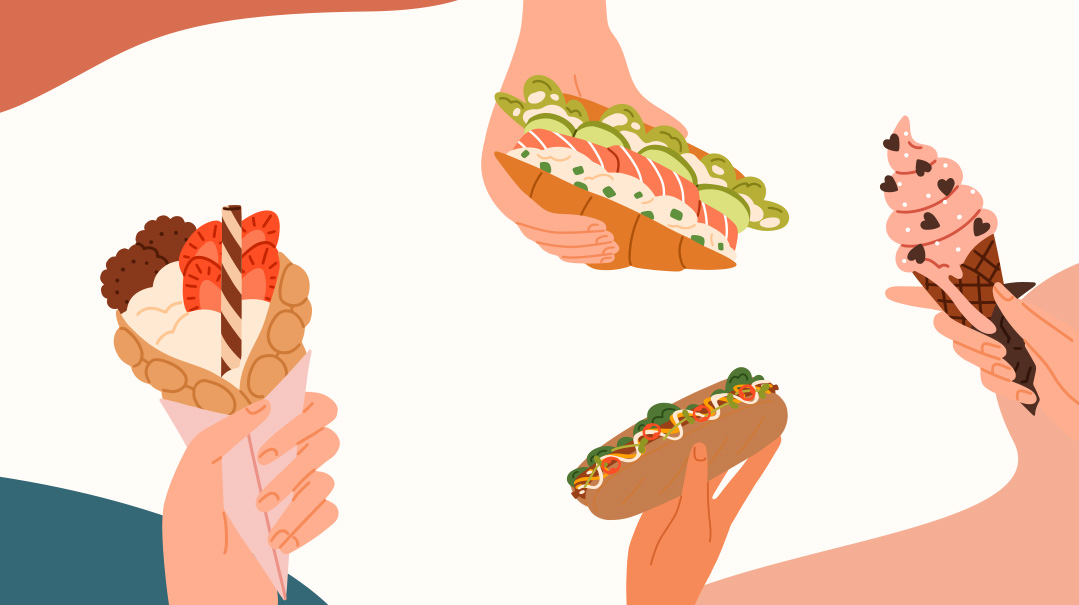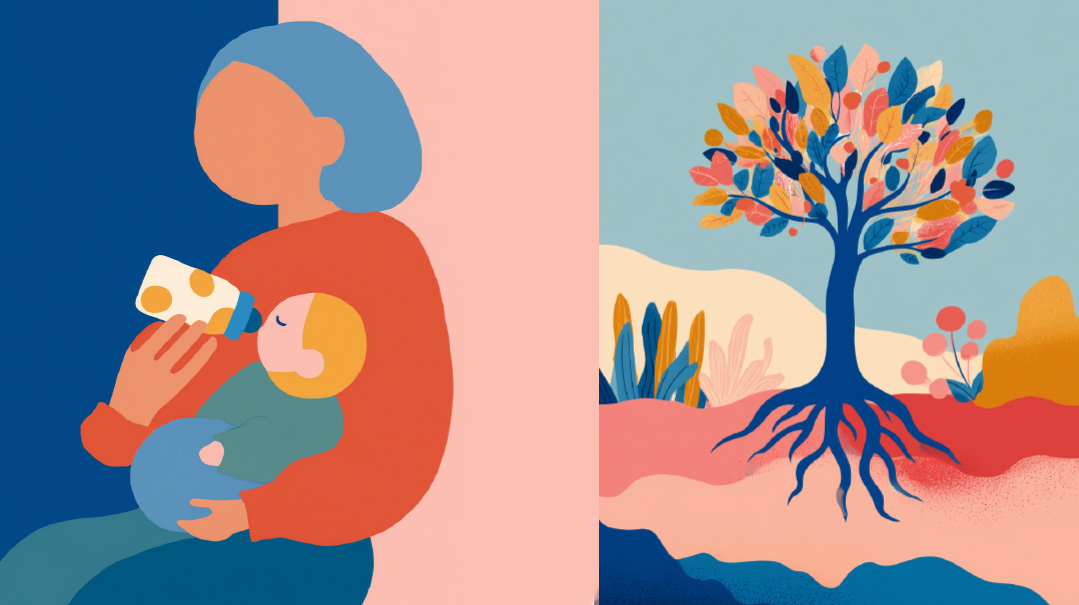Curious about Cravings
| July 11, 2023By embracing cravings as our teachers, we transform them from struggles into opportunities for growth and self-discovery

Curious about Cravings
Shira Savit
Cravings have a curious way of capturing our attention, hijacking our thoughts, and beckoning us toward certain foods. Whether it’s a sudden urge for chocolate, a relentless desire for salty snacks, or an insatiable craving for ice cream, we’ve all experienced the pull of these powerful yearnings. As women, our relationship with food cravings can be especially intricate, influenced by a myriad of factors such as hormonal fluctuations, emotional connections, societal expectations, and lifestyle choices.
Many of us are accustomed to perceiving cravings as something to be conquered or suppressed, as adversaries to our health goals and self-control. However, a shift in perspective will help us learn that cravings are not the enemy; instead, they’re invaluable teachers, holding within them a wealth of wisdom.
Cravings serve as a means through which our bodies communicate with us, conveying important information. By embracing cravings as our teachers, we transform them from struggles into opportunities for growth and self-discovery. This shift in mindset enables us to adopt a compassionate and mindful approach to our cravings, fostering a healthier and more balanced relationship with food and ourselves.
While individual experiences may differ, and sometimes there is a more significant medical or emotional issue that requires attention, it’s worth considering some valuable insights cravings may offer.
- Imbalances and nutritional needs
Cravings can be a signal that our bodies are lacking in certain nutrients or neurotransmitters. For example, a craving for chocolate may indicate a need for magnesium. A craving for sweets might be because we need a quick energy boost. Cravings for carbohydrates such as bread, pasta, or potatoes can be linked to low serotonin levels.
- Skipping meals or waiting too long in between
Prolonged periods without eating can trigger a “high alert” state in the body. Blood sugar levels drop, prompting the release of stress hormones such as cortisol. This, in turn, increases the desire for high-fat, high-sugar, or high-salt foods.
- Lack of sleep
Inadequate sleep disrupts the delicate balance of hunger and fullness hormones — ghrelin hormone, responsible for stimulating appetite, increases, while leptin, which signals satiety, decreases. Furthermore, insufficient sleep often leads to increased food consumption as the body seeks energy, with carbohydrates and sugar serving as quick refueling sources.
- Emotional needs
Cravings frequently possess an emotional component, offering insights into our emotional needs and our tendency to turn to food for comfort or as a coping mechanism. By recognizing the emotions associated with cravings, we can develop healthier strategies to address those emotional needs effectively.
- Associations and triggers
Cravings can reveal associations and triggers that influence our desire for certain foods. For example, a craving for ice cream may be linked to nostalgic childhood memories or the need for comfort during stressful times. Identifying these associations can help us understand the underlying reasons behind our cravings and develop alternative ways to address those triggers.
- Dehydration
Cravings can sometimes be a sign of dehydration. Our bodies may mistake thirst for hunger, leading us to crave specific foods. When experiencing a sudden craving, it might be beneficial to drink a glass of water and assess whether the craving subsides. Staying hydrated can help prevent food cravings and promote overall well-being.
These are just a few examples of the many reasons why women might experience cravings, often arising from a combination of factors. In future columns, we’ll delve into practical ideas to support ourselves when cravings strike. For now, let’s embrace this opportunity to get curious about our cravings, reminding ourselves that they provide us with an opportunity for self-awareness. By observing cravings without judgment, we gain insights into our physiology, lifestyle habits, emotions, and desires.
Shira Savit, MA, MHC, INHC is a mental health counselor and integrative nutritionist who specializes in emotional eating, binge eating, and somatic nutrition. Shira works both virtually and in person in Jerusalem.
Hear Ye, Hear Ye
Dr. Jennie Berkovich
Last week’s theme in the clinic was ear infections. I peeked into one tiny set of ears after another, examining the wide range of normal- to abnormal-appearing eardrums.
Ear infections, also known as otitis media, occur when the middle ear becomes inflamed due to a virus or bacteria. They are more prevalent in children for a number of reasons, primarily anatomic. The Eustachian tubes connect the middle ears to the back of the throat and help drain fluid and equalize the air pressure inside the ears. Children’s Eustachian tubes are shorter and less angled than those of adults. As a result, fluid becomes harder to drain and is more likely to cause infection.
I often describe this concept as a river that isn’t flowing. When fluid isn’t moving it “sits,” making it easier for “bugs” (i.e., viruses and bacteria) to grow. Nearly 75 percent of children experience at least one ear infection before the age of three.
Most ear infections are caused by a virus and do not require antibiotic treatment. I will commonly recommend the “wait-and-see” approach, allowing the body’s immune system to resolve the infection naturally. Antibiotics are typically prescribed when symptoms are severe, or last longer than 48–72 hours, or if the exam shows significant pus or infected fluid.
I start to get concerned when a child has three or more infections within six months, or more than four infections in a year. At this point, I may involve an ENT colleague to help decide if myringotomy tubes (or just “tubes” in the vernacular) might be beneficial.
Myringotomy tubes are small, hollow tubes inserted into the eardrums to help equalize pressure and promote fluid drainage. The procedure is safe, relatively quick, and provides relief to children by reducing the frequency and severity of ear infections.
There are several myths surrounding “natural” remedies for ear infections. Herbal drops or home remedies like garlic and olive oil are often touted as effective alternatives to antibiotics. However, there is no evidence that any of these are helpful; in fact, they can be dangerous, causing worsening pain and fluid and obstructing the view of the eardrum.
While there is some anecdotal evidence suggesting that reducing dairy intake may minimize ear infections, the scientific evidence on this topic is limited and inconclusive. The relationship between dairy consumption and ear infections is complex and not fully understood. I always hesitate to remove an entire food group from a child’s diet without a very good reason, so this should only be done after discussing it with your child’s pediatrician or ENT.
As a child who suffered from frequent ear infections, I sympathize with my little patients who come in tugging at their ears or cranky from disrupted sleep. I hope that most of them will grow out of this phase, like I did, but for those who need a little extra boost, antibiotics, and surgery as a last resort, offer tremendous relief.
Dr. Jennie Berkovich is a board-certified pediatrician in Chicago and serves as the Director of Education for the Jewish Orthodox Medical Association (JOWMA)
I Contribute, You Control
Dina Schoonmaker
IT can be very stressful to be in the shidduchim stage, and we want to anchor ourselves by thinking about what’s going on in Shamayim.
Hashem knows exactly who our destined zivug is. When I worry that a specific factor may be working against me (e.g., my looks, health, financial situation, etc.), I have to remember that while some boy may say no to me for that particular reason, the boy will never say no.
Like in every area of life, we do hishtadlus because Hashem wants us to contribute, not because we can control.
We contribute. He controls.
Dina Schoonmaker has been teaching in Michlalah Jerusalem College for over 30 years. She gives women’s vaadim and lectures internationally on topics of personal development.
(Originally featured in Family First, Issue 851)
Oops! We could not locate your form.







